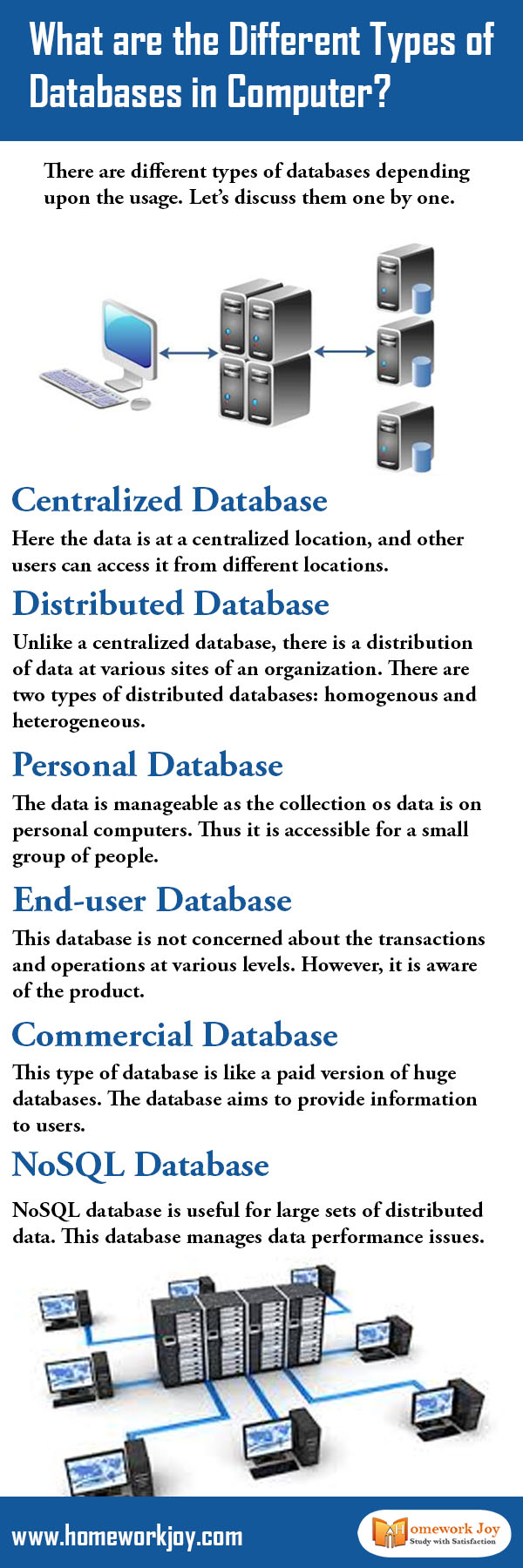A database is the collection of information with an organized way in a computer system. A database management system (DBMS) controls the database. So there are different types of databases for storing information in a computer system. Today we’ll discuss them in brief.
Also, check some of our posts that might help you in learning to computer science:
How Many Types of Computer Viruses Are There?
Truth Table of Logic Gates | Types and Functions
There are different types of databases depending upon the usage. Let’s discuss them one by one.
Centralized Database
Here the data is at a centralized location, and other users can access it from different locations.
Distributed Database
Unlike a centralized database, there is a distribution of data at various sites of an organization. There are two types of distributed databases: homogenous and heterogeneous.
Personal Database
The data is manageable as the collection of data is on personal computers. Thus it is accessible for a small group of people.
End-user Database
This database is not concerned about the transactions and operations at various levels. However, it is aware of the product.
Commercial Database
This type of database is like a paid version of huge databases. The database aims to provide information to users.
NoSQL Database
NoSQL database is useful for large sets of distributed data. This database manages data performance issues.
Operational Database
The operational database creates large amounts of data in real-time. This technology supports speed, availability of data integrity, or concurrency. Some examples of the operational database:
- Sensors
- Machine data
- Internet of Things (IoT)
- Transactions
Relational Database
Characterization of these databases depends on the set of tables where data gets fit into a pre-defined category. Standard Query Language (SQL) is the standard user program for a relational database.
Cloud Database
It is a type of database that gets stored over clouds known as a virtual environment. This virtual environment can be either a hybrid cloud, private, or public. Here users have to pay for storage capacity. Thus it is useful for business applications.
Object-oriented Database
As a collection of object-oriented programming languages, it is organized around objects. Various items can create by storing a relational database.
Graph Database
It is a type of database that is a collection of nodes and edges. However, each node represents an entity, and each edge describes the relationship between entities. Thus its a type of NoSQL database that uses graph theory for the storage of data.
These are some types of databases that you should know as a student of computer science. For further computer science assignment help, rely on us. Our experts are readily available.
